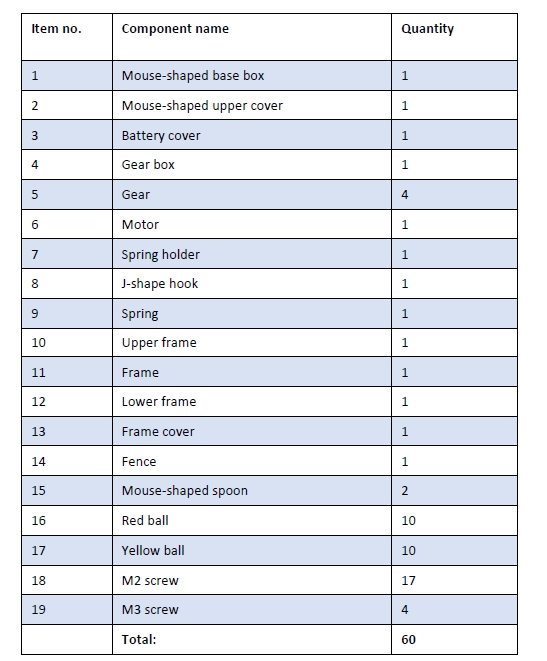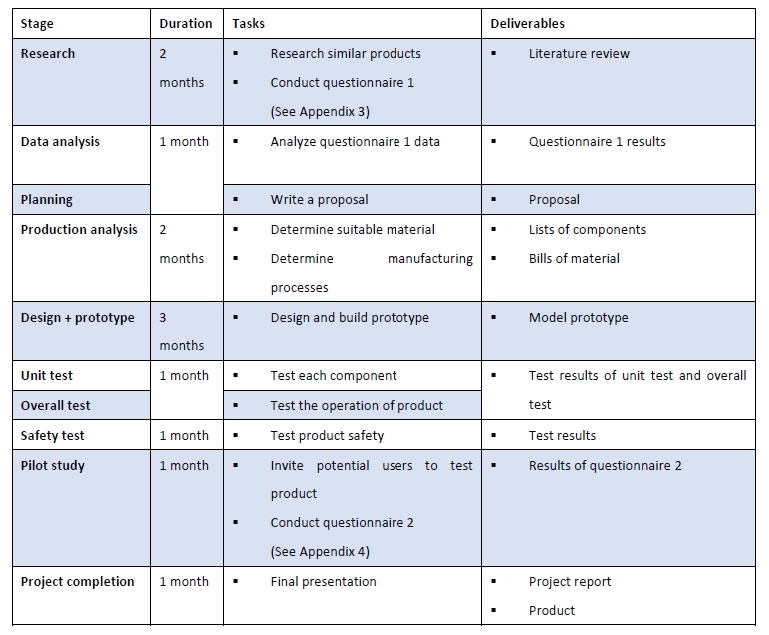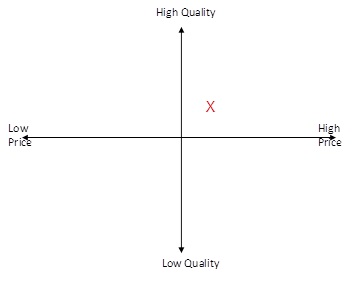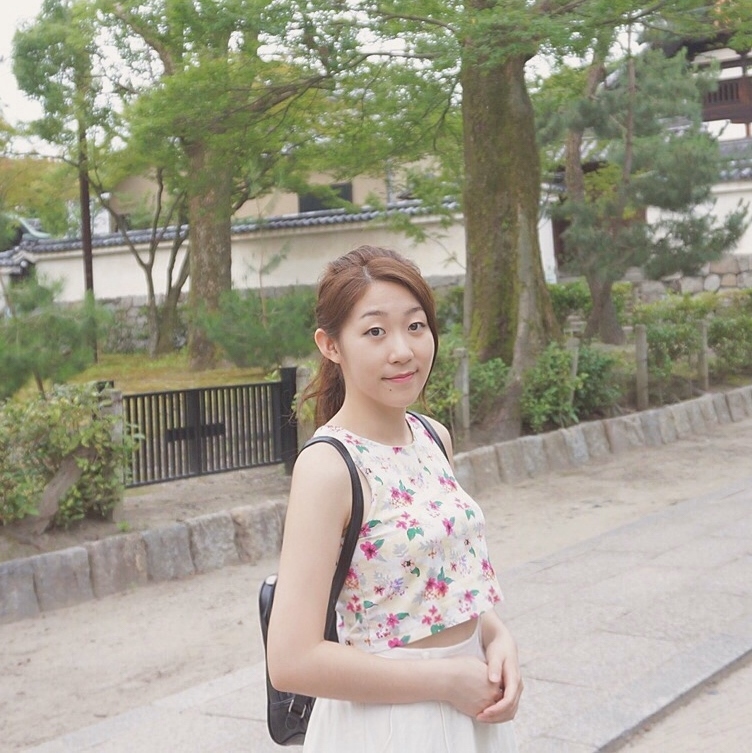search the site
Proposal of all-rounded educational toy – Mickey ball catcher
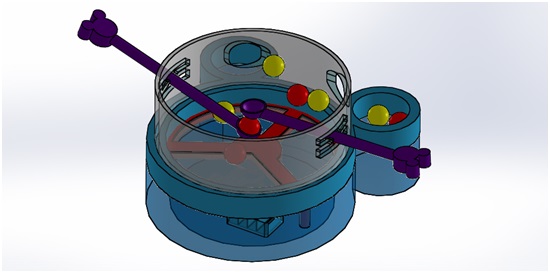 Personal photo; Wu Cheuk Yan. Venus
Personal photo; Wu Cheuk Yan. Venus
Proposal of all-rounded educational toy – Mickey ball catcher
Wu Cheuk Yan, Venus; The Hong Kong Polytechnic University
Abstract–This proposal introduces the development of an innovative “all-rounded” toy – the Mickey Ball Catcher – which promotes playfulness and also educational benefits to 6 to 10 year old children, and incorporates a cartoon-like mouse design for creating an attractive image. By participating in this game, children can i) gain Mathematics knowledge, ii) react more effectively to stimulus, and iii) socialise more actively, thus potentially benefitting their overall development. Technical details about the project implementation highlight the importance of marketing and promotion of the product. Most importantly, the proposed budget for the project, details about after-sales service and recommended further development are included so that this product will be tentatively successfully when launched.
I. INTRODUCTION
A. Background
With the advancement of technology, different kinds of toys are being introduced into the international market; some of which are mainly invented for children either to have fun or to learn something. However, the combination of these two features is rarely found in the majority of toys, especially those produced and distributed in Hong Kong. Thus, the author proposes to manufacture an all-rounded educational toy for children called “Mickey Ball Catcher”.
This product provides children with educational training while they are enjoying the game, reflecting the growing trend of educational toys in the market. According to a report on toys and games in Hong Kong [1], it was found that most parents appreciated the educational value in toys. As a result, the attention of consumers and the toy industry turned towards this type of toy [2]. Moreover, Lopez discovered that there had been a cultural shift in the expectations of toys for children towards those which utilised knowledge of child development in providing cognitive learning for children [3]. Thus, this product is concerned with supplying academic value to primary school students. It has been designed with several factors in mind in order to be a sustainable product design [4].
B. Objectives
This product aims to
• introduce an innovative type of children’s toy into the market
• promote playfulness and provide educational benefits to children
• provide an alternative choice for parents to choose from among children toys
C. Target Customer
The product will be designed for parents with 6-10 year old children and is especially suitable for medium-income families or those who have spare time to spend on buying and playing toys with their children. Since the main feature of the toy is to promote all-rounded education, parents who are looking for an innovative type of toy may find this product satisfactory.
D. Comparison of Similar Products
In order to be successful in standing out from the crowd, an analysis comparing the appearance, playfulness and educational impacts of this toy with other similar Maths educational products available in the market has been carried out. It was found that the variety of this kind of children toy is narrow and it can be mainly divided into two types: (i) Lego puzzle and (ii) mathematical calculation. The results of the analysis are summarised below.
1) Appearance: The common educational toys found in the market are ordinary in appearance with few colours, and tend to be dull. However, this product utilises a cartoon-like mouse shape for the base box and the heads of the spoons, and is painted in four bright colours – red, blue, yellow and purple.
2) Playability: This type of toy is normally designed for one player only and can be played in only one way. For the sake of improving the toy’s playability, the product is open for two players to contest each other, and there are two playing methods provided depending on the ability level of the children.
3) Educational Impacts: Most similar products concentrate on the academic training of the children only which tends to be monotonous and less efficient for learning. Instead, the proposed product focuses on offering all-rounded education including both Mathematics practise and stimulus training so that the academic learning and the physical development of the child can effectively be taken care of at the same time.
II. OVERVIEW
A. Appearance
The Mickey Ball Catcher mainly consists of some small balls, two spoons and a base box. A mouse is utilised in the shapes of the heads of spoons and the base box so as to attract the interest of children. Also, the colours applied in the product include red, blue, yellow and purple for creating a vibrant image in order to stimulate a playful and joyful feeling.
Fig. 1 Mickey ball catcher.
B. Operation
Once the product is turned on, the small balls inside the base box are caused to bounce up and down by the movement of the inner components of the box. There are two distinct ways of playing the game depending on the age of the children.
1) Junior Level: Within one minute, the player has to use the spoon to catch as many numbered balls as possible. When the time counter stops, the winner will be the one who has sorted balls with a higher numerical value than the other.
2) Senior Level: At the senior level, there are two types of cards supplied: i) cards with numbers and ii) cards with mathematical equations. When the game starts, the players have to draw the cards and then make some mathematical calculations, following by catching the desired balls. The winner will be the one who has caught the required balls that correctly completes the equation.
C. Benefits
Providing an all-rounded education is the focus of this toy. Children can benefit from
1) Mathematical Practise: From the several operations of the product, children can practise Mathematics by completing an equation correctly. They can apply the related knowledge that they have learnt from school and complete some exercises in the game, which is potentially beneficial for their studies.
2) Stimulus Training: Since the balls bounce up and down once the game commences, children have to pay attention to the number of every single ball in order to catch the desired ones after finishing their calculation. Their senses are stimulated because they need to do rapid calculations calmly and then catch the balls as fast as possible to win.
3) Interaction and Socialisation: The game is for two players so that children can have interaction with others while playing it. They can invite their friends and family members to compete with them, potentially enhancing their socialisation skills.
III. TECHNICAL DETAILS
A. Components and Structure
The list of components of the toy is stated as below (for the description of each component, see Appendix 1).
TABLE 1
LIST OF TOY COMPONENTS
This product is motor-driven. Power is supplied by the batteries to the motor which drives the rotation of the chain of gears, moving the J-shape hook that is linked to the end of the gear box up and down. Next, as the spring is inserted into the hook which is located between the upper frame and the base box, with the movement of the hook, the frame assembly will shift upwards and downwards, creating a bouncing effect for the balls on the frame to act like they are jumping.
B. Applied Technology
Three technologies are applied to this product to enable the thematic function – making balls bounce up and down on the frame.
1) Battery for Power Supply: A battery power supply is proposed instead of a main electricity supply. This could help avoid the utilisation of electrical wires which limits the usage area of playing the toy.
2) Gear Box: Inside the gear box, there are two large gears and two small ones. The theory of lever principle shows that driving the large gears by the small ones can magnify the power with less force and this can help support the movement of the frame and also avoid causing damage to the motor.
3) Cooperation of Inner Components: In order to successfully create the toy’s bouncing effect, the operation is designed with the cooperation of the motor, gear box, J-shaped hook and the spring. As a result, the balls on the film can “jump” for the players to catch.
C. Material Selection
Apart from the standard components, the material chosen for the product should be hard and strong, to withstand the force needed during operation and prevent it from deforming. Due to its high strength and light weight, three types of thermoplastics will be selected for manufacturing each component.
1) Polyethylene: For the base box, fence and spoons, Polyethylene will be used since it is translucent and is generally more resistant to heat.
2) Polyvinyl Chloride: The film will utilise soft Polyvinyl Chloride which has relatively
high elastic modulus that enables the balls to bounce on it.
3) Polypropylene: Polypropylene will be chosen for production of the balls due to its low density which can make the balls lighter.
D. Production Methods
With consideration of the product’s quality, economics benefits and productivity, the manufacturing processes for producing each component is different and the final selection involves a series of calculations (See Appendix 2). After analysing the properties of the components and their materials, this product will be manufactured using three production methods.
a. Thermoforming – the base box
b. Injection Moulding – the fence and the spoons
c. Blow Moulding – the film and the balls
E. Schedule
TABLE 2
SCHEDULE OF TASKS
F. Product Safety
As the awareness of the importance of toy safety has been raised, producing a toy that fulfills the necessary standards of safety is of prime concern. Thus, three aspects of the product designed meet the criteria of this standard.
1) Absence of Sharp Angles: According to the international standard principle of toy safety 1400.49 [5], the design should avoid any sharp angles so as to prevent children from getting hurt. Thus, all the corners of this product will be processed into circular shapes.
2) Sufficient Size of Tiny Components: As stated in the international standard principle of toy safety 1500.50.53 [5], all components of children toys should be bigger than 3.17 centimetres to prevent children from swallowing them. Therefore, the diameter of the balls will be 3.5 centimetres.
3) Lock of Power Supply: Since it is dangerous for children to make contact with the power supply, the battery box of this product will be sealed with the cover fastened by screws. Consequently, children should not be able to take the battery out, therefore avoiding any possible injury.
G. Pilot Study
To confirm that the product is ready to be introduced to the market, a pilot study will be conducted. After producing the prototype of the toy, which will have passed the unit test, this model will be distributed to potential users like parents with 6-10 year old children and primary schools. Following this, a questionnaire will be conducted in which different questions will be asked of children, parents and teachers about their views of the toy. Their opinions will then be collected for analysis and evaluation so as to find out what the positive and weak points relating to this product are, in order to be able to make necessary improvements before launch (See Appendix 4).
IV. MARKETING AND PROMOTION
A. Positioning
After production, the next important issue before it is to be introduced into the market is positioning. There are two main criteria for locating the product: price and quality. The price will be set at a medium level because this range of price is more affordable for most parents. Setting it too high may frighten off potential customers and pitching it too low would give an image of low quality. The quality will be relatively high as it tends to be one of the most vital considerations for parents when buying toys for their children, so quality control should be carefully monitored in order to make sure that the product is of good quality.
Fig. 2 Quality vs. price positioning axis.
B. Marketing Strategy
1) Place: In line with its positioning, the product will be retailed through toy store chains like Toys”R”Us and Wonderland, as well as some department stores like Citistore. These large-scale multi-location shops have a wider range of customers who have higher purchasing power compared with the smaller ones, so that placing the product there is perhaps advantageous for boosting sales.
2) Promotion: In order to draw the attention of the public, the toy will be promoted through our website with details of its operation demonstrated in a short video. Also, there will be some promotion booths inside the toy stores during the first month of sales. A part-time promoter will be employed to introduce the product and assist customers when trying out the game so they might know more about the toy. In addition, concessions and discounts will be given after a certain period of sale to attract more customers.
C. Expected Cost
According to the marketing questionnaire (See Appendix 3), about two-thirds of participants were willing to buy toys between HK$101 and $200, while a few would spend either below $50 or above $300 on children toys. Therefore, the price of the toy will be set at $160.
D. Sales Prediction
It is predicted that the number of sales will be approximately 2,000 to 2,500 toys per year. Hence, plans include initially producing 5,000 units in production volume. Under the best conditions, the expected number of products sold will be about 100 in the first month of sales, which will increase during festivals like Children’s Day and Christmas. In the worst case scenario, the number of toys sold would be about only 50 per month or 600 items per year in total.
E. After-Sales Service
After the product is bought by the customer, an after-sales service will be provided by the developer’s company. As marked on the package of the toy, people can find the business website address and phone number for contacting company staff when meeting difficulties during operation. Also, the option to return a purchase will be provided if there is any possible damage found on the toy that was caused in the stage of production. It is guaranteed that the product will be offered in perfect condition.
V. BUDGET
The estimated budget of the entire project is as outlined below.
TABLE 3
COST OF EACH COMPONENT OF THE TOY.
TABLE 4
ESTIMATED TOTAL COST OF THE PROJECT.
TABLE 5
SALES PREDICTION.
TABLE 6
PROFIT PREDICTION.
VI. CONCLUSION
The proposal concerns the introduction of an innovative children’s toy called Mickey Ball Catcher which promotes all-rounded educational benefits to children while they are playing the game. Mathematics practise, stimulus training and socialisation can be provided with this new type of toy, which is painted in four bright colours and has two playing modes. It consists of 21 components and is motor-driven. When the power is supplied, the inner linked components will cause each other to move along in order to make the balls on the film start bouncing. Then, the players can enjoy the game by catching one’s desired balls as fast as possible.
Polyethylene, polyvinyl chloride and polypropylene are selected for the manufacture of the product which involves three production methods: thermoforming, injection moulding and blow moulding. The entire schedule is guaranteed to be completed within one year and the product is certified to meet international standards of toy safety. In order to be successfully launched in the market, clear positioning of the toy is required to be set at a medium level of price and at a high level of quality. It is to be retailed through toy store chains, and promoted through the developer’s website and promotion booths inside the toy stores. With the provision of after-sales service, the product will sell for HK$160 with predicted sales of approximately 2,000 to 2,500 units per year, generating at least $530,000 net profit per year in the best case scenario.
VII. FURTHER DEVELOPMENT
For its further development, there are two suggestions for modifying the product.
A. Installing a Music Instrument Inside the Base Box
A small music instrument like an mp3 player will be installed inside the mouse-shaped base box of the product. It can provide relaxing music for the players to enjoy and have fun.
B. Enlarging Size to Allow Up to Four Players
The complete product will be manufactured in double the size of the original version, and there will be two more holes in the circular fence to allow two more spoons to be put through. This way, the number of players can be increased from two to four to let more children play together.
REFERENCES
1. Euromonitor International, Toys and Games in Hong Kong, China, para. 5, 2015 [Online]. Available: http://www.euromonitor.com/toys-and-games-in-hong-kong-china/report [Accessed 2 March 2015].
2. Hong Kong Trade Development Council, Toy Industry in Hong Kong, para. 8, 2015 [Online]. Available: http://hong-kong-economy-research.hktdc.com/business-news/article/Hong-Kong-Industry-Profiles/Toy-Industry-in-Hong-Kong/hkip/en/1/1X000000/1X001DGH.htm [Accessed 8 March 2015].
3. A. Lopez, “Child development knowledge and human factors in toy design: An exploratory study of popular children’s products,” East Carolina University, 2012 [Online]. Available: http://hkall.hku.hk/search/i?1267607815 [Accessed 8 March 2015].
4. S. Edwards, “Sustainable product design and globalization in the toy industry: A focus on doll-making,” University of Massachusetts Lowell, 2007 [Online]. Available:
http://pqdd.sinica.edu.tw.ezproxy.lb.polyu.edu.hk/cgi-bin2/Libo.cgi [Accessed 8 March 2015].
5. International Organization for Standardization, Safety of Toys [Online]. Available: http://www.iso.org/iso/iso_catalogue/catalogue_tc/catalogue_tc_browse.htm?commid=54044 [Accessed 8 March 2015].
APPENDICES
APPENDIX 1. DESCRIPTION OF COMPONENTS.
APPENDIX 2. CALCULATION OF PRODUCTION METHOD.
APPENDIX 3. RESULTS OF QUESTIONNAIRE 1.
APPENDIX 4. QUESTIONNAIRE 2 (PILOT STUDY).
BIO
Venus is a final year undergraduate student studying for her Bachelors in Product Engineering and Marketing at the Hong Kong Polytechnic University. She enjoys writing and exploring, and hopes to pursue a career in product invention.
REFLECTION
These days, even though there are different kinds of toys out in the market, very few of them are multi-functioned. Thus, I proposed an all-rounded educational toy in which children can have training while playing a game. Some specialised knowledge I had learnt in my Major was applied to my proposal allowing the product idea to become more detailed, accurate and practical.















